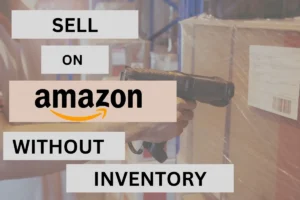Amazon, the world’s largest online retailer, is an excellent marketplace for eCommerce entrepreneurs of all sizes. It offers a great opportunity to expand, whether you run a small business or work for a large corporation.
However, while Amazon offers many benefits, it can also take time to navigate.
In recent years, Amazon has become increasingly strict with the enforcement of its terms of service and policies. As a result, many entrepreneurs have seen their accounts suspended or even permanently closed (deactivated).
Fortunately, a few simple steps can be taken to help avoid Amazon seller account suspensions. Here are ten tips to help keep your Amazon seller account in good standing:
Top 10 Tips to Avoid Amazon Seller Account Suspensions
Before we start, we recommend you read and understand Amazon’s Terms of Service frequently. Failure to comply with the terms of service will almost certainly lead to an account suspension.
1. Avoid Being Out-of-Stock for Too Long
While Amazon sellers may experience out-of-stock periods, they can lead to complications if you are not careful. Amazon recommends that sellers monitor their inventory and stock levels carefully to ensure they can fulfill orders promptly.
Failure to do so may lead to a high Pre-fulfillment Cancel Rate. If your cancellation rate exceeds 2.5%, Amazon may limit your selling privileges or even suspend you from the platform.
Furthermore, being out-of-stock for too long can cost you the Buy Box, making it difficult to compete against other sellers. All the more reason sellers should monitor their inventory and stock levels proactively. Consider automated tools or services to help you. They can provide real-time updates when stock levels are low.
2. Minimize Late Shipments
Late shipment rate, or LSR, is another critical metric that Amazon uses to evaluate seller performance.
The LSR is the percentage of orders shipped late compared to all orders. For example, if you send 5 out of 10 orders late during a given period, your LSR would be 50%.
Unfortunately, if your LSR exceeds 4%, Amazon will likely suspend or terminate your selling privileges. Late shipments can damage Amazon’s reputation and lead to poor customer experiences.
To minimize your LSR, you should use tools and services that can help streamline your order fulfillment process. This includes implementing automated inventory management tools and setting realistic timeframes for processing and fulfilling orders.
3. Respond To Customer Inquiries Within 24 hours
As a customer-centric platform, Amazon requires that you respond to customer inquiries within 24 hours. This is because Amazon values customer satisfaction and wants to meet customer needs as quickly as possible. And if you thought weekends and holidays would give you a break, think again.
Amazon’s policies are the same for all days of the week and all times throughout the year. That said, failure to respond to customer inquiries on time can result in account suspension.
4. Create a Detailed and Original Product Page
If creating your own listings for products on Amazon, your content should be original and of the highest quality. This includes informative product descriptions, original images and videos, and other content that will attract customers to your Amazon store.
Remember, the violation of trademark laws can pose much more significant consequences than account suspension. That said, create detailed and original product page content that complies with Amazon’s trademark guidelines. You should also ensure that any images you upload have the right to be used.
5. Avoid Fake Customer Reviews
As we’ve already alluded to, Amazon takes customer satisfaction extremely seriously. Therefore, any attempts to manipulate the customer are against Amazon’s policies and will result in suspension.
You should never buy fake reviews or participate in activities that falsely increase your product ratings. Not only is it unethical, but you’ll also be risking your product page, which could lead to suspension or termination.
6. Avoid Selling Defective Items
When selling products on Amazon, sellers have seven options:
- New
- Renewed
- Rental
- Used – Like New or Open Box
- Used – Very Good
- Used – Good
- Used – Acceptable
In any case, Amazon requires that sellers ensure product quality and accurately describe them in the product listing. If you’re selling defective or damaged items as “new condition,” you’re risking your reputation and the safety of Amazon customers. This can lead to severe consequences like account suspension or even legal action.
To avoid this, ensure that all your listings meet acceptable standards and are accurately described in the product listing. Wholesale dropshipping, however, presents a challenge as you won’t have a chance to inspect items before they are shipped out. That being the case, working with reliable dropshipping suppliers with a good track record is your best bet to ensure quality.
Also, keep an eye out for customer complaints about defective items or discrepancies. In order to achieve this, avoid using suppliers with a lot of issues.
Taking action can help protect your business and maintain a positive relationship with customers and Amazon.
7. Do Not Sell Prohibited Products/Items
Prohibited products such as alcoholic beverages, assault weapons, and theft devices can get your Amazon seller account suspended.
To avoid running into any problems, double-check all of the items against Amazon’s list of restricted products. If anything you sell could be a potential violation, you should avoid listing it to protect your business.
Furthermore, keeping up to date with Amazon’s changing policies is essential. This includes reading the latest news from Amazon about what items are prohibited or restricted for sale on their platform.
This way, you can be sure that you are following the rules and avoid any penalties or suspensions.
8. Avoid Fake Tracking Numbers
To avoid the possibility of account suspension due to poor performance metrics, sellers sometimes use fake tracking numbers. Fake tracking numbers, or proxy tracking numbers, do not correspond to the actual shipment.
These numbers come from third-party websites and are used to fool Amazon’s system into believing the package has been shipped.
If you are caught using fake tracking numbers, Amazon will likely assume you are engaging in fraudulent activity. Consequently, your Amazon seller account will be suspended as soon as possible. Additionally, Amazon may not issue you a disbursement for your sales.
So, while using substitute tracking numbers may seem like a good idea, it’s ultimately not worth the risk.
9. Avoid Sub-User Access
Sub-users are accounts you create to give specific access to certain features on your main Amazon account. For example, you may make a sub-user account so that someone can help manage orders for you. However, you should thoroughly vet the company or freelancer to whom you are giving access to your account.
According to speculations, if your sub-user previously handled accounts that violated Amazon’s Terms of Service, your account may be inspected.
Therefore, it is important to avoid the use of shady companies or freelancers or be very careful in your selection. Additionally, ensure that anyone who needs access to your account has the proper credentials and permissions.
10. Avoid Retail Packaging
When selling products on Amazon, it is important to avoid using retail or third-party packaging. In other words, any shipping materials, packing materials, or invoices with a third-party logo or brand should not be used.
This is because Amazon considers this practice to create a poor customer experience. And since they aim to be “earth’s more customer-centric company,” they take issue with the seller.
Unfortunately, since many Amazon sellers have historically shipped items from retailers, this requires sellers to find other options.
Two-step dropshipping helps sellers avoid this problem by repacking the product at a warehouse after removing the branded packaging. This model ensures sellers are not using third-party logos or brands on the item’s packaging, which could result in account suspensions.
Why is Amazon Enforcing Stricter Policies?
You may wonder why Amazon is enforcing these policies despite the violations that can lead to suspensions. The answer is simple: customer satisfaction and platform protection.
By enforcing stricter policies, Amazon upholds its commitment to superior customer service and customer experience. Therefore, if it’s suspected that a seller violates Amazon’s policy, the account will be suspended. This allows the company to protect its customers and ensure a safe, secure shopping experience.
Additionally, Amazon takes its security very seriously. By enforcing stricter policies, they can protect their platform from sellers who may damage the Amazon brand. This also protects Amazon’s reputation as a reliable online marketplace for customers worldwide.
Ultimately, Amazon’s strict policies are valid and well-grounded. This, however, can lead to frustrating situations for sellers who may not be aware of the rules in place.
The good news is that an appeals process can help sellers regain access after certain violations. To better understand this process, let’s examine Amazon’s seller suspensions data:
Amazon Sellers Suspension Data
Whether you’re a brand-new or experienced seller, it’s important to be aware of the risk of suspension. From poor performance metrics to policy violations, there are a variety of reasons why sellers get suspended.
The following data shows the number of suspensions among 100 customers:
Suspension Rate
Before we jump into the numbers, note that Amazon reinstates sellers based on their previous reason for the violation. Therefore, if a seller is suspended for a serious violation, they may not be able to sell on Amazon again.
First Suspension: 70%
Second Suspension: 15%
Third Suspension: 9%
Fourth Suspension: 6%
As you can see, the fourth percentage rate is quite low. All the more reason, you should carefully follow Amazon’s guidelines and policies.
Explore our Chrome extension for Amazon.
Average time Sellers get reinstated
From the data listed above, it’s clear that sellers’ chances of getting their accounts reinstated diminish with each suspension. But how long does it take for sellers to get reinstated? Here is what the data shows:
Under 24 hours: 10%
25 – 48 hours: 20%
3 – 4 days: 50%
5+ days: 30%
Note that this data is based on a study completed in 2016. Therefore, the reinstatement process may have changed over the years. Ultimately, the pace of the reinstatement process depends on how effectively the seller appeals. This may also depend on how backed up Amazon’s Trust and Safety team may be.
This process can change each quarter, so sellers must stay up-to-date with the latest procedures.
Fortunately, there are steps that sellers can take to increase their chances of being reinstated quickly and properly:
5 Steps to Properly Appeal an Amazon Seller Account Suspension
While Amazon’s reinstatement process can be complex, don’t worry. All you must do is be patient and complete these steps correctly. With that said, please complete the following steps with accuracy to avoid a more extended period of suspension.
1. Visit Amazon Seller Central
Amazon Seller Central is where sellers can view and manage their suspension notices. Upon logging in, follow the following prompts:
Seller Central> Performance> Performance Notifications> Location suspension notice> Appeal
Once you have opened the appeal page, review your notice and the details of your suspension. During this stage, collecting and organizing all necessary data pertaining to the suspended account is important. Take your time and collect the necessary information.
2. Create an outline for your appeal
Prior to contacting Amazon, it is important to create an outline of your appeal. This should include your main points and any supporting documents you will use to support your appeal.
By preparing a detailed outline, you can ensure that your appeal is clear, concise, and logical. You can also ensure that you include all the pertinent information for Amazon to review and consider your request.
If you are unsure of how to go about creating an outline for your appeal, follow this guide:
Introduction
This introductory paragraph should contain vital information such as your name, address, and contact information, as well as your seller account information. Also briefly state the reason your account was suspended.
Create an Action Plan
Once you have outlined your appeal, create a recovery plan that outlines how you will handle the issue. This could include changing specific policies or procedures, improving customer service, or issuing refunds.
Including a recovery plan in your appeal shows Amazon that you are taking the matter seriously.
Provide a Step-by-Step Outline of the Follow Up Process
After describing how you will handle the current situation, you should also outline how to prevent the issue from recurring. This could include implementing new procedures or training staff on customer service.
By providing Amazon with a clear plan of action, you are showing that you are taking their feedback seriously. Furthermore, you’re showing that you have their user’s best interests at heart and doing your best to prevent future reoccurrence.
Emphasize your store’s value
To conclude your appeal, emphasize your store’s value to Amazon’s customers. This could include highlighting a unique selection of products, competitive pricing, excellent customer service, and fast shipping.
By highlighting the value you bring to customers, Amazon is shown that suspending or closing your account would hurt them. Furthermore, you can remind them of the time and effort you have already put into building a successful business.
3. Submit your appeal
The next step is to submit your appeal letter and any supporting documentation to Amazon through their account suspension appeal form. make sure to include all relevant information and evidence that might support your cause.
4. Follow up with Amazon
After submitting your appeal, follow up with Amazon to ensure they have received your letter. You can also ask for an estimated timeframe for their decision.
Conclusion
Ultimately, Amazon wants to ensure that customers feel secure when making purchases through their site. By taking proactive steps toward improving your customer service, you are sending a message that you understand their concerns.
At Ecom Circles, we work to prevent account suspensions by helping our clients build a solid foundation for their Amazon business.
Using our dropshipping software, you can easily manage your inventory, orders, listings, and shipments from a single interface. By automating the time-consuming tasks that come with running a dropshipping business, you’ll be able to focus on other things.
By taking proactive steps to maintain your account, you will remain in good standing and avoid any possibility of suspension. To learn more about our two-step dropshipping solution, book a call with our team today.






